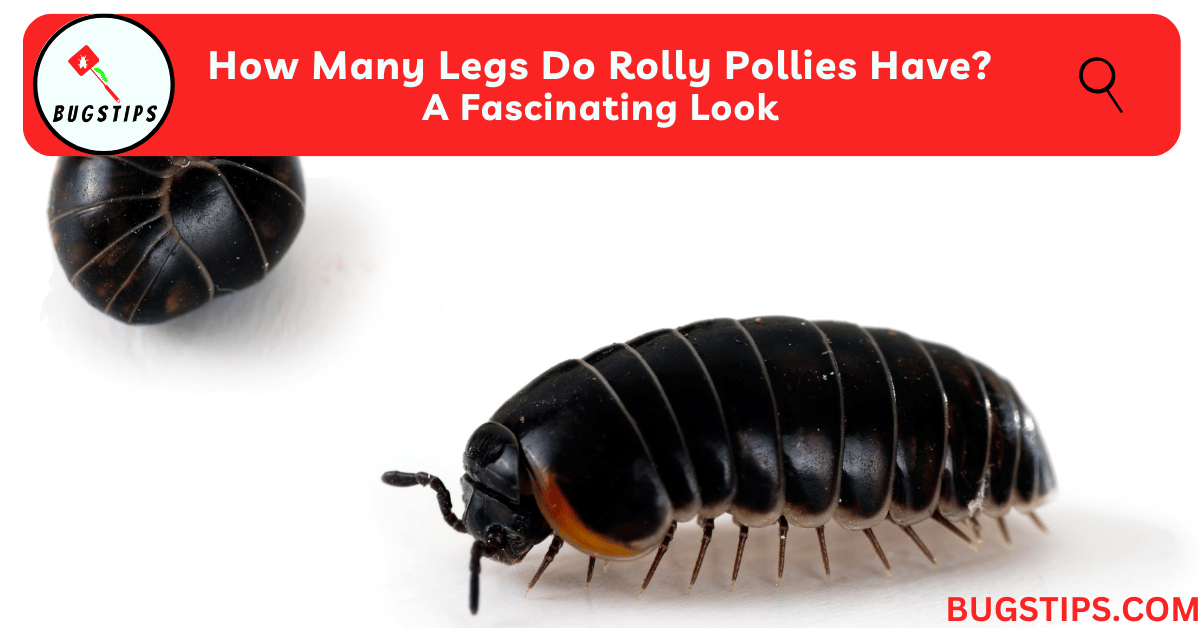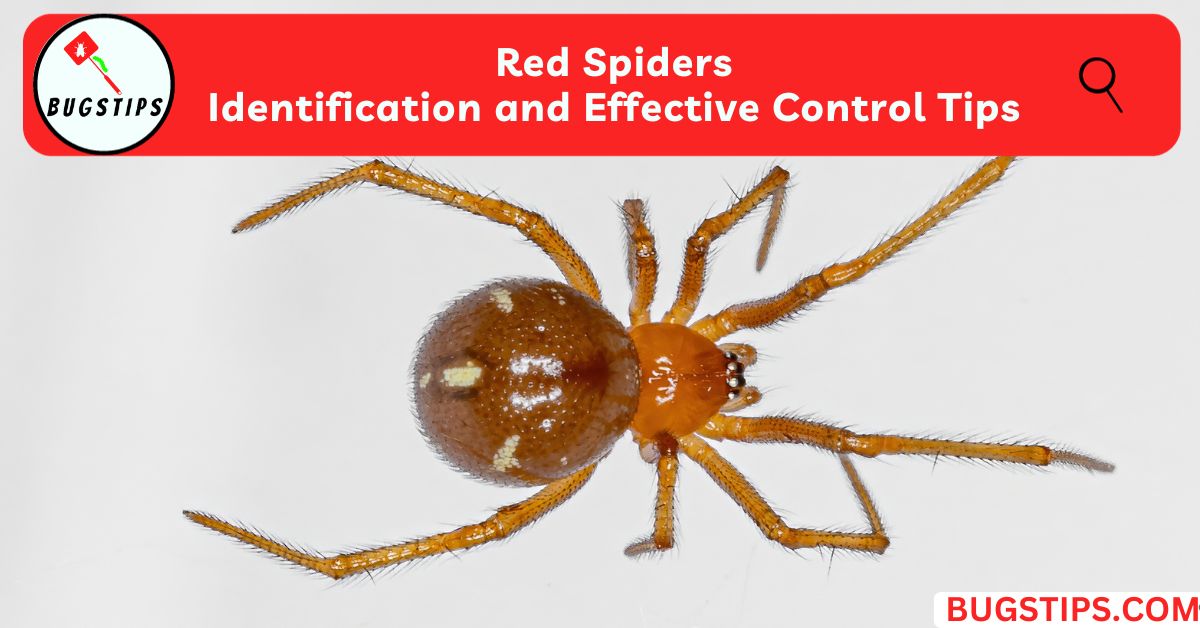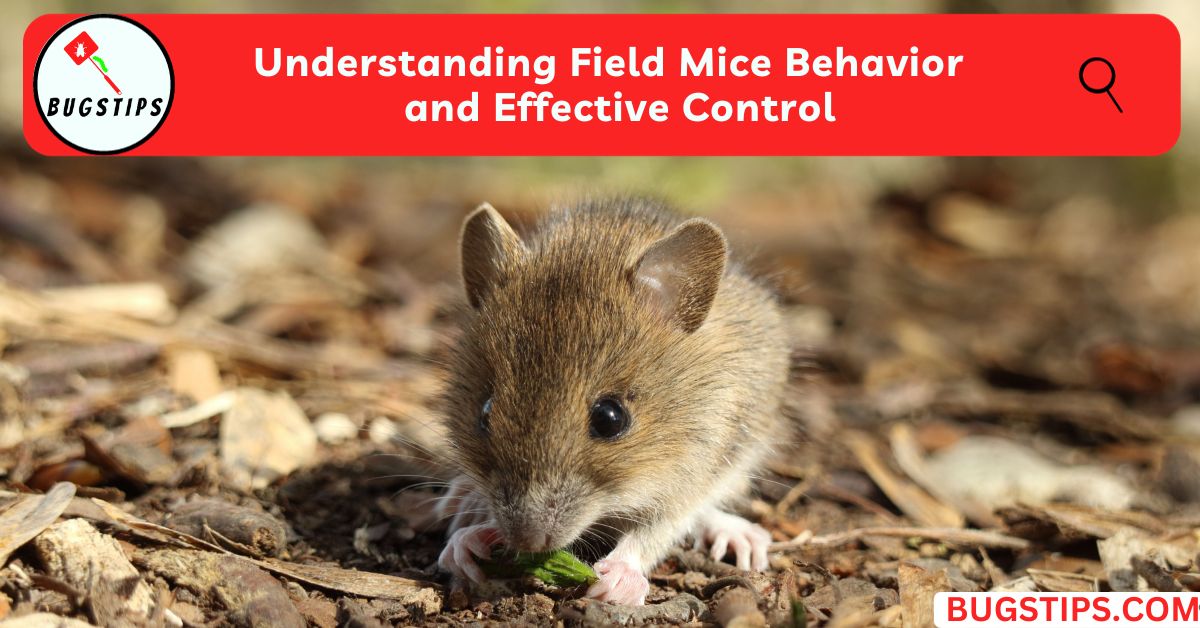This post may contain affiliate links which means as an Amazon Associate, this site may earn a small commission on qualified purchases made through links at no extra cost to you. Learn more on Affiliate Disclosure
Rolly pollies, those small, gray, pill-shaped creatures you might have seen in your garden or under a rock, are fascinating little creatures. One question that often comes up about them is how many legs rolly pollies have.
In this article, we’ll explore the anatomy of rolly pollies, including their body segments and exoskeleton, and answer how many legs do rolly pollies have.
We’ll also discuss how rolly pollies use their legs, whether they can survive with fewer legs, and whether they have the ability to regenerate lost legs.
So, let’s take a closer look at these interesting creatures and find out how many legs rolly pollies really have!
How Many Legs Do Rolly Pollies Have?
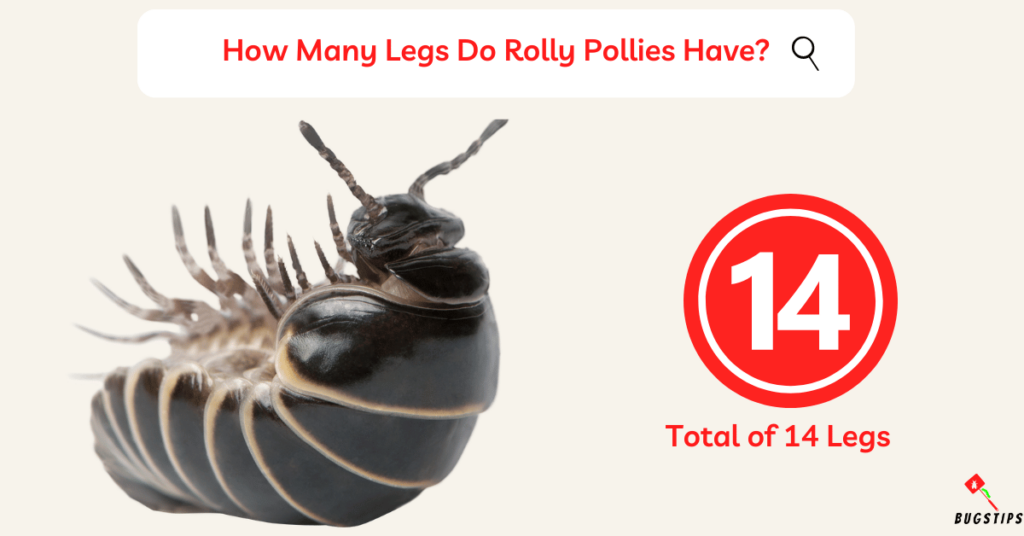
Pill bugs, also known by their scientific name Armadillidium vulgare, have a total of 14 legs. Each leg is jointed and equipped with tiny sensory hairs that help them navigate their environment.
These legs are arranged in seven pairs, with each pair attached to a specific body segment.
The balanced distribution of legs across their body allows pill bugs to move with remarkable agility and efficiency.
You May Also Like – 7 Little Black Bugs on Dogs Not Fleas!
Anatomy of Rolly Pollies
To better understand the leg count of rolly pollies, let’s take a closer look at their anatomy.
Pill bugs belong to the crustaceans called isopods, distant relatives of crabs and lobsters.
While they may not resemble their aquatic cousins at first glance, pill bugs possess a similar body structure that is well adapted to their terrestrial lifestyle.
Body Segments
Rolly pollies consist of three distinct body segments: the head, thorax, and abdomen. The head is located at the front of the body and is where their sensory organs, such as their eyes and antennae, are situated.
This segment allows rolly pollies to perceive their environment and navigate their surroundings effectively.
Moving down to the middle segment, we find the thorax. This is where the magic happens, as rolly pollies possess a total of seven pairs of legs attached to this segment.
These legs, arranged in a balanced manner, provide them with the ability to move with remarkable agility. Each leg is jointed and equipped with tiny sensory hairs, allowing rolly pollies to sense and respond to their surroundings.
Lastly, we come to the abdomen, which serves as the posterior section of their body. Here, we find additional body segments and appendages that contribute to their overall functionality and adaptation to their environment.
Exoskeleton
The exoskeleton of rolly pollies is a key component of their anatomy. It serves as a protective armor, shielding their soft internal organs from harm. Made primarily of chitin, a tough and flexible material, the exoskeleton provides support and structure to the creature’s body.
Interestingly, while many crustaceans have fully waterproof exoskeletons, rolly pollies have a unique characteristic – their exoskeleton is not entirely waterproof.
You May Also Like – Bed Bugs vs Scabies – 5 Key Differences
This permeability allows for some moisture exchange, which is crucial for their survival. It also makes them more susceptible to desiccation, or drying out, hence their preference for damp environments.
The exoskeleton of rolly pollies undergoes periodic molting. As they grow, their exoskeleton becomes too small to accommodate their increasing size. To accommodate their growth, rolly pollies shed their old exoskeleton and form a new one.
During this molting process, they are temporarily vulnerable until the new exoskeleton hardens and provides the necessary protection.
Why Do Rolly Pollies Have So Many Legs?
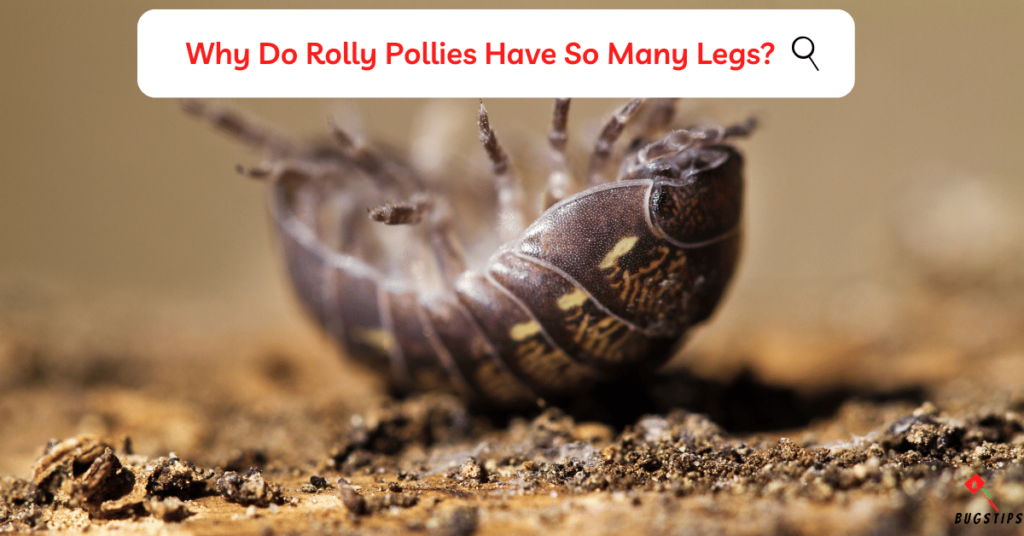
The abundance of legs possessed by rolly pollies serves a specific purpose in their unique lifestyle. While some may initially wonder if all those legs are necessary, each leg plays a crucial role in their survival and overall functionality.
One primary reason for the high leg count is the need for efficient movement. Rolly pollies inhabit environments such as gardens, leaf litter, and under rocks, where they encounter various obstacles and navigate complex terrains.
The numerous legs allow them to move with agility, providing stability and adaptability in their surroundings. The jointed nature of their legs enables them to flex and extend, facilitating quick and precise movements.
Another advantage of having many legs is the ability to distribute their weight evenly. Rolly pollies are not particularly large creatures, and their leg count helps disperse their weight across multiple points of contact with the ground. This distribution minimizes the pressure exerted on each leg, preventing fatigue and ensuring smooth locomotion.
Additionally, the legs of rolly pollies serve as sensory appendages. Tiny hairs on their legs, known as setae, act as receptors, allowing them to sense their environment. These sensory cues help rolly pollies detect potential threats, locate food sources, and navigate their surroundings effectively.
It is important to note that while rolly pollies have a relatively high leg count compared to some other creatures, their legs are not designed for high-speed locomotion.
Instead, they excel in slower, deliberate movements suited to their habitat. Their legs provide the versatility and precision necessary for maneuvering through the intricate microhabitats they inhabit.
You May Also Like – Little Black Bugs in My Car | Expert Removal Guide
Can Rolly Pollies Live Without Some Legs?

Rolly pollies, with their impressive number of legs, may raise the question of whether they can survive if some legs are lost or damaged. The answer to this question lies in the regenerative abilities and resilience of these fascinating creatures.
In the event of losing a leg, rolly pollies can indeed continue their lives without significant impairment. While their legs serve essential functions, they possess the remarkable ability to regenerate lost appendages to varying degrees.
The process of leg regeneration in rolly pollies is known as autotomy, where they intentionally shed a damaged or trapped leg to escape from a potential threat or danger.
After losing a leg, rolly pollies initiate the regeneration process. A specialized structure called a blastema form at the site of the lost leg.
The blastema contains a group of undifferentiated cells capable of proliferating and differentiating into the various tissues necessary for the formation of a new leg. Over time, these cells undergo growth and development, gradually reconstructing the missing leg.
While the regenerated leg may not be an exact replica of the original in terms of size or structure, it is functional and serves its purpose. The regenerated leg allows rolly pollies to resume their daily activities, including movement, foraging, and other essential tasks.
Related Article – 9 Types of Swimming Pool Bugs You Should Know About
It’s important to note that while rolly pollies can live without some legs, excessive leg loss can impact their overall mobility and survival. Losing too many legs may hinder their ability to move efficiently and access vital resources.
Additionally, the process of regeneration requires energy and resources, which can put a strain on their overall health and well-being.
Final Thoughts
Rolly pollies, those adorable little creatures, possess a total of fourteen legs. These legs are not just a random feature but play a crucial role in their survival and daily activities.
Their abundance of legs enables rolly pollies to move with agility and navigate through various terrains. Each leg is equipped with sensory hairs, allowing them to perceive their environment and respond accordingly.
And rolly pollies have the remarkable ability to live without some legs. Through a process called autotomy, they can shed damaged or trapped legs and regenerate new ones over time. This adaptability ensures their continued functionality and resilience.
Overall, the leg count of rolly pollies is an intriguing aspect of their anatomy. It showcases the wonders of nature and the incredible adaptations that allow these creatures to thrive in their habitats.
You May Also Like – 10 Long Skinny Black Bugs in House
FAQs
How many eyes do rolly pollies have?
Rolly pollies typically have two compound eyes located on the sides of their head. These compound eyes consist of multiple tiny lenses, allowing them to detect light and movement in their surroundings.
How do pill bugs breathe?
Pill bugs breathe through gills, which are located on their abdominal appendages. These specialized structures allow them to extract oxygen from the air and help maintain their respiratory needs.
Do pill bugs bite?
Pill bugs do not possess venomous or biting mouthparts, and they are generally harmless to humans. Their primary defense mechanism is to roll into a ball when threatened.
Are rolly pollies beneficial to the garden?
Yes, pill bugs can be beneficial to gardens as they aid in the decomposition process. By feeding on decaying organic matter, they contribute to nutrient cycling and help maintain soil health.
Resources – (for further reading)
University of Florida – pillbug – Armadillidium vulgare
Encyclopedia Britannica – Autotomy
ScienceDirect – Blastema – an overview

